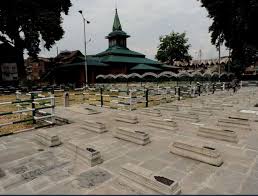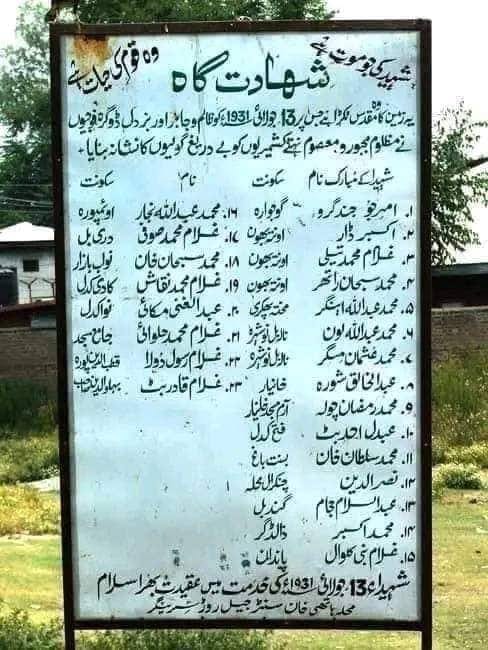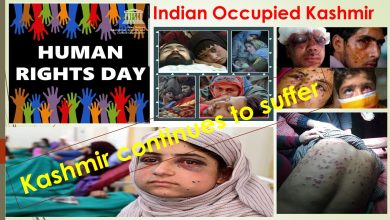Article: 13th July 1931 massacre blackest chapter in history of Jammu and Kashmir
Raies Mir

Kashmiri people commemorate the 93rd martyrdom anniversary of 13th of July as Martyr’s Day which Kashmiris celebrate every year to reaffirm their resolve to continue pursuing the path shown by the martyrs until to end Indian illegal occupation of their motherland.
The Martyr’s Day, 13th July 1931 massacre is the blackest chapter in the history of Dogra autocratic rule of Jammu and Kashmir. The Dogra regime period is considered to be the worst phase of the Kashmir history on account of cruelties meted out to the Muslims.
On the 13th of July 1931, the troops of Dogra Maharaja had killed 22 Kashmiris, mostly from Srinagar district, one after the other, outside Central Jail in Srinagar during the court proceedings against one Abdul Qadeer who had asked Kashmiri people to defy the tyrannical Dogra dynastic rule. Thousands of people had gathered outside the court to show their solidarity with Abdul Qadeer. As the time for obligatory Zuhr prayers approached, one of the youth stood up and started reciting Azan. He was shot dead by the Dogra soldiers and the next youth started the Azan where it was left by the martyred youth. He was also killed and in the process of completing the Azan a total of 22 Kashmiris were martyred, one after the other. This carnage is the blackest chapter in the history of Jammu and Kashmir.
The new saga of the Kashmiris’ sufferings started after the partition of the Indian subcontinent in 1947. The Partition Plan had given the right to the then Princely States to accede to either of Pakistan or India on the basis of their geography and demography. The Kashmiris had a great feeling to join Pakistan due to their strong geographical, religious and cultural bonds with the country. However, their dream of becoming part of Pakistan was shattered by the landing of Indian Army in Srinagar on October 27, 1947 in total disregard to the Partition Plan that sowed the seeds of the Kashmir dispute. This shows that Kashmir is the unfinished part of the partition of the South Asian subcontinent.
The continued denial of their rights by India compelled the people of the occupied territory to start a mass uprising in 1989. It picked up pace with the passage of time and gave sleepless nights to the Indian occupation forces and its puppets. The people rose against the illegal occupation and injustice and vowed to continue their righteous struggle till Kashmir’s liberation from Indian bondage.
According to Kashmir Media Service over four hundred and fifty thousand Kashmiris have achieved martyrdom since 1947 for their resistance against Indian hegemony and their love for Pakistan. Over 96,326 persons were martyred by Indian troops, 7,341 of them in custody since January 1989.
The extrajudicial killing of popular youth leader, Burhan Wani, on July 8, 2016 and after that highly qualified Kashmiri Dr Sabzar Ahmad Sofi, Dr Manan Wani, Junaid Sehrai, Musaib Ahmad Butt, Gulzar Ahmad Reshi, Dr Mudasir Gul, Feroz Ahmad Dar ,Dr Owais Ahmad Mir, Eng Aijaz Ahmad Hafiz, Eng Basit Rasool, Majid Zargar, Dr Azhar-ud-Din Khan, Dr Mohammad Rafi Butt, Eng Javid Malik, Eng Massiullah Khan, Eng Nayeem Ahmed Mir, Eng Altaf Ahmed, Eng Muhmmad Rafi, Dr, Talik Afzal Shah,Eng Rafiq Ahangar, Omar Ashan, Ashaq Hussain Dar, Mohmmad Younis, Eng Asif Nazir, Eng Rayees Ahmed Dar, Eng Basit Rassol Dar, Eng Muzammil Manzoor, Eng Khursheed Ahmed Malik, Nawaz Ahmed Wagey, Eng Eisa Fazil, Eng Syed Owaiz, Sajad Yousuf, Syed Ruban Shah, Zakir Musa, , teenager Mudasir Rashid Parray and teenager Saqib Bilal marked a turning point in the Kashmiris’ struggle against injustice and Indian occupation. The killings triggered a huge anti-India uprising in the Kashmir territory which was met with brute force by the occupation troops.1,934 Kashmiris, including 286 in fake encounters and custody, since the extrajudicial killing of popular youth leader Burhan Muzaffar Wani on July 8, 2016 while over 11,000 persons had received pellet injuries and 385 of them had lost their eyesight in one or both eyes.

On 5th August 2019, the Hindutva Indian BJP government repealed the special status and placed the occupied Kashmir under military and police siege and communications lockdown.
However, the fact remains that the worst kind of Indian brutalities have failed to force the Kashmiris to surrender their true political demand and they are determined to carry forward the mission of their martyrs and sacrifices of people who remain alive in their hearts and minds.








